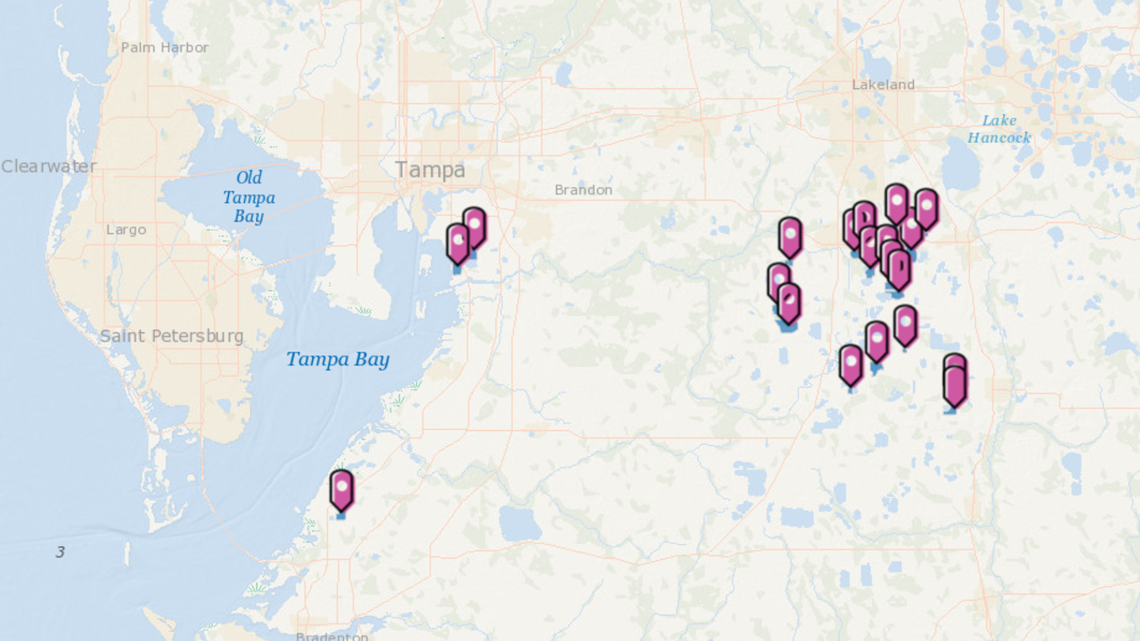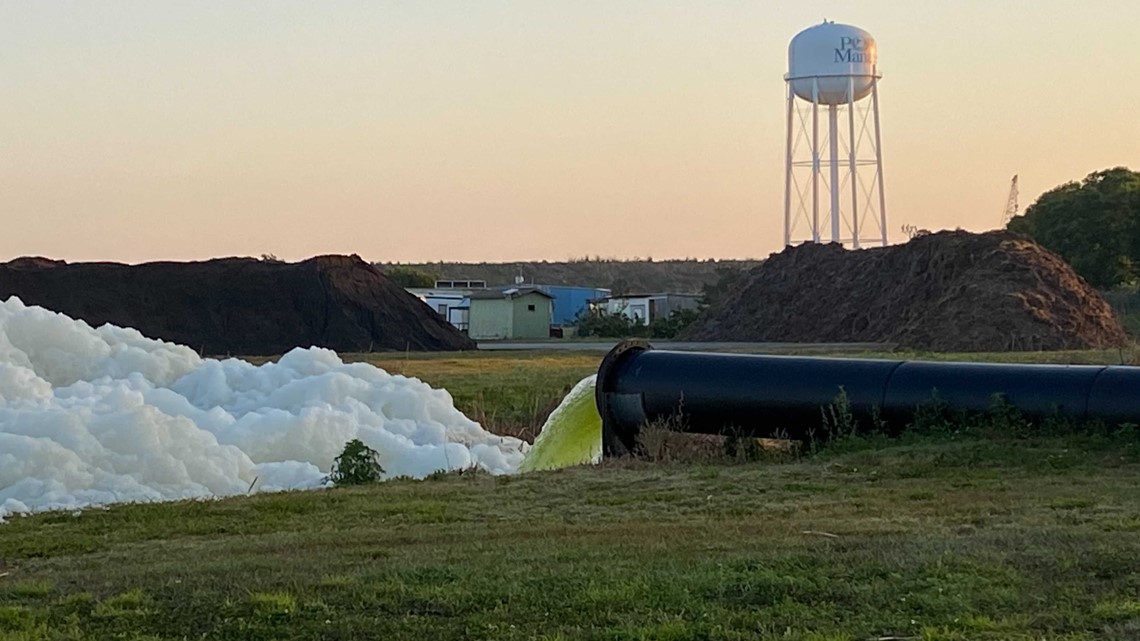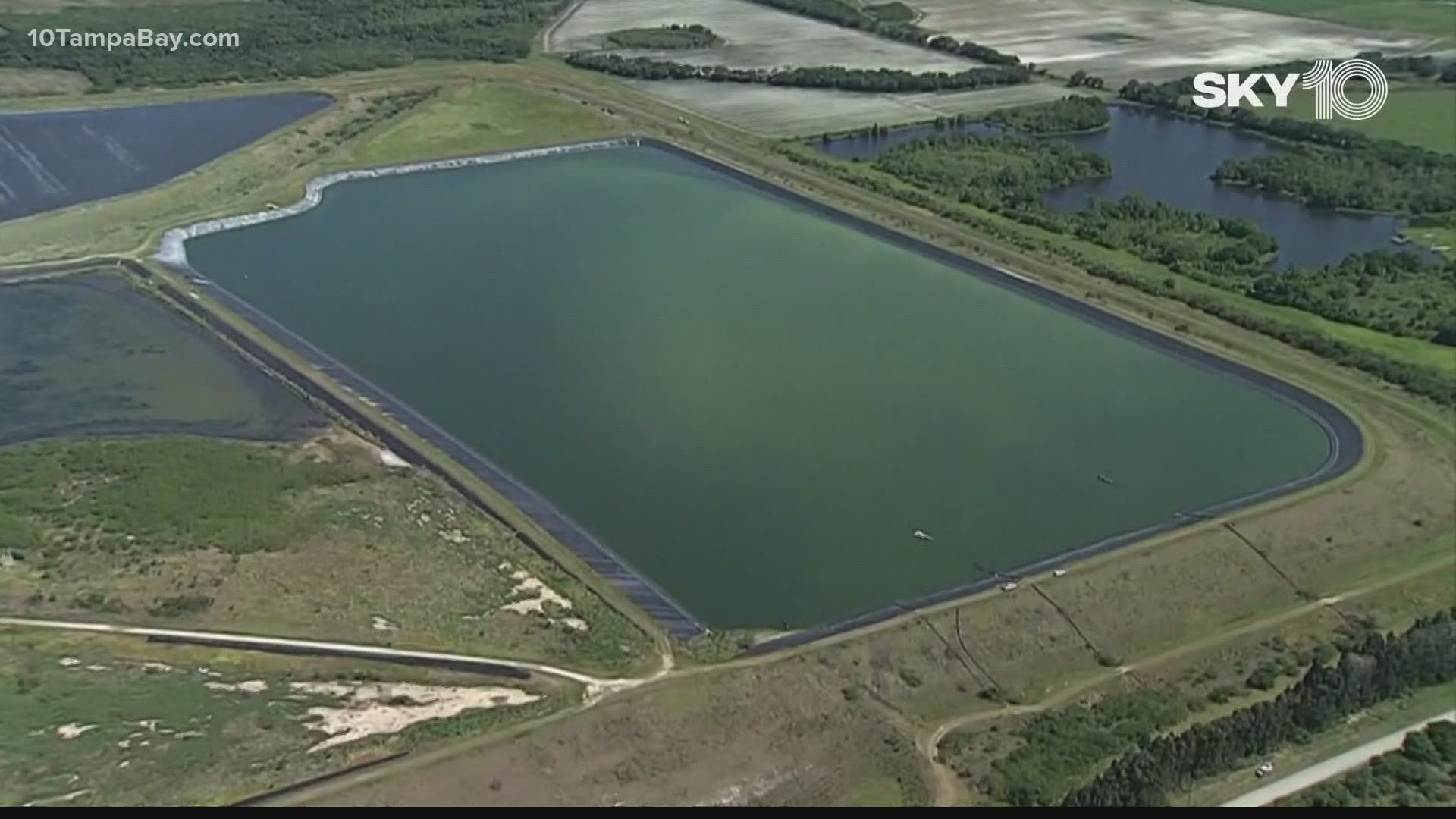MANATEE COUNTY, Fla. — The recent and ongoing panic caused by the possibility of an "imminent collapse" at the former Piney Point phosphate processing plant all stemmed from a leak at the bottom of a retention pond.
And while the crisis seems to have been averted -- despite crews pumping millions of gallons of wastewater into Tampa Bay -- all eyes are still on the colossal man-made hill at the center of the issue.
The retention pond that held 480-million gallons of wastewater at Piney Point is actually a gypsum stack. A giant dumpster meant to hold the waste that's produced from phosphate mining.
However, Piney Point isn't the only mining facility with a massive gypsum stack. In fact, there are 25 such stacks sprinkled across Florida -- 22 of which are concentrated in just Manatee, Hillsborough, and Polk Counties.
These rolling hills of Central and West Florida are a byproduct of a pretty large industry in which the state plays an integral part.
Phosphate rock is mined from the ground and mixed with sulfuric acid in order to create phosphoric acid -- the base of many fertilizers. Consumption of phosphate-based fertilizers is so high in the U.S. that phosphate rock mining is the fifth largest mining industry in the country, according to the Environmental Protection Agency.
Phosphogypsum, or gypsum, is what’s leftover when all that mining is done. And since there’s really no safe way of disposing of it, companies dump all that waste into man-made hills called gypsum stacks.


Matthew Pasek, a geoscience professor at the University of South Florida, says the reason they’re so prevalent in Florida is that the state accounts for around 70 percent of all phosphate mining done in the country.
The latest numbers from the Department of Environmental Protection show that only four of Florida’s 25 stacks are still active, meaning companies are still pouring gypsum inside them. That leaves 21 of these mountains full of hazardous waste just sitting across the state.
Pasek says, presumably, those inactive stacks are being tested and maintained by environmental officials. Mainly because there’s not much else they can do to discard it.
“This has been the issue with [gypsum stacks] for 50 years. We don’t quite know what to do with the gypsum,” Pasek says.
Gypsum can be used in housing material, like drywall, but the issue with this type of gypsum, Pasek says, is how radioactive it is.
Why is it radioactive? Well, because all rocks are -- even a granite countertop registers on a Geiger counter. The issue is the mining process increases gypsum’s radioactivity, and piling so much of it together causes concerns of it increasing even further.
So, unless there’s a safe way of repurposing gypsum, the best solution is to just keep them stacked.
“We stack it and say, ‘well, we’ll figure it out when it comes to it.’ But, in the meantime, it’s just a waste byproduct. It is still better to stack it in a big pile than spreading it around,” Pasek says.
Thankfully, what sets Piney Point apart from many other gypsum stacks is that it also acts as a retention pond, holding gallons of untreated wastewater. Its proximity to Florida’s coast also has an added benefit.
To avoid a collapse, crews directed much of that wastewater into the bay.
Sadly, that does create the risk of poisoning sea life and fueling harmful algal blooms, but it’s better than the alternative other gypsum stacks face, according to Pasek.


He says the more inland gypsum stacks are in close contact with the water aquifer. So, the potential of getting waste into the groundwater is a lot higher in those areas.
But, those are where the differences end; because it’s not the first time gypsum stacks have caused issues.
In the past, sinkholes have opened up underneath these gypsum stacks and caused leaks.
“These things. They’re not stable,” Pasek says.
Until mining companies and researchers dedicate serious time to finding out how to properly get rid of gypsum, Pasek says these stacks are a necessary evil.
The phosphate that’s being extracted through mining is still vital to crop production and agriculture as a whole.
What other people are reading right now:
- Getting your second dose of COVID-19 vaccine? Here's what to expect
- Prince Philip, husband of Britain’s Queen Elizabeth II, dead at 99
- Pumping of wastewater from Piney Point put on pause
- Man sentenced to 24 years in prison for killing of mom, baby in 2018 Bayshore crash
- Hurricane experts predict an above-average 2021 Atlantic hurricane season
- Rays Up! Here's everything you need to know about the Tampa Bay Rays home opener today
►Breaking news and weather alerts: Get the free 10 Tampa Bay app
►Stay In the Know! Sign up now for the Brightside Blend Newsletter

